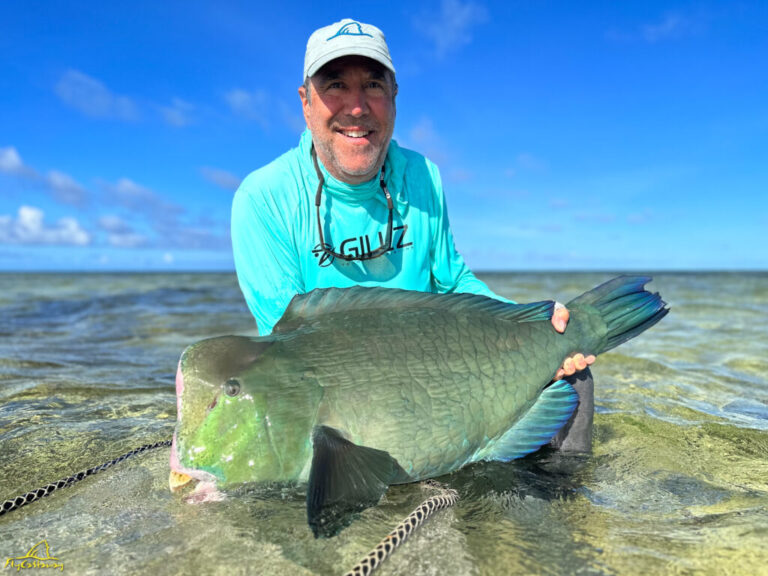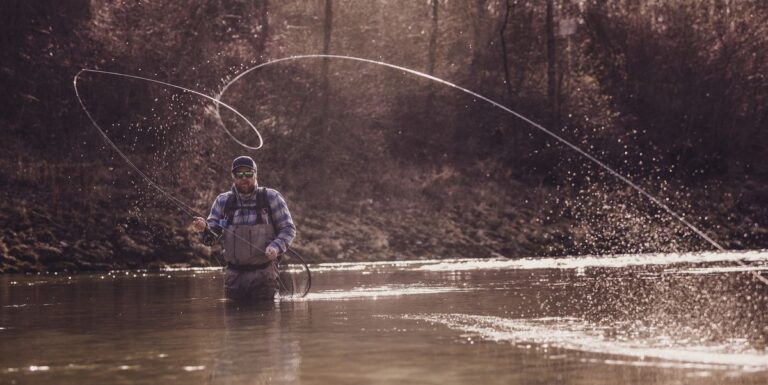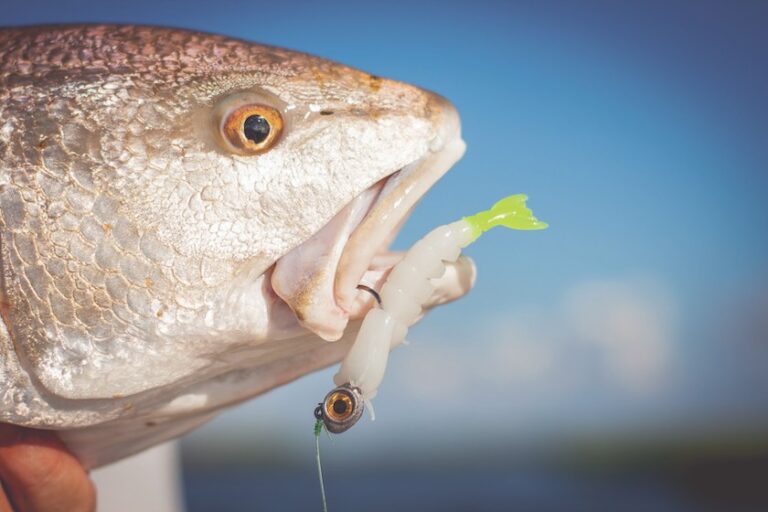Yes, there are specific knots that are recommended for flats fishing. These knots ensure strong and reliable connections between the line and the lure or hook, increasing the chances of successfully landing a catch.
We will discuss the best knots to use for flats fishing and why they are effective. Whether you are targeting bonefish, permit, or tarpon, having the right knots in your arsenal can make a significant difference in your fishing success.
So, let’s dive in and explore the knots that every flats angler should know and use.

Credit: www.amazon.com
Understanding The Importance Of Knots In Flats Fishing
When it comes to flats fishing, using the right knot is crucial for a successful and enjoyable experience. Knots play a fundamental role in various aspects of flats fishing, including lure action, fish presentation, and knot strength. Let’s delve deeper into why knots are so important in this type of fishing.
Why Using The Right Knot Is Crucial:
- The right knot ensures a strong and secure connection between your line and lure, preventing them from coming apart during a fight with a fish.
- A properly tied knot minimizes the risk of line slippage or breakage, which could result in losing the fish of a lifetime.
- Using the correct knot helps maintain the integrity of the fishing line, ensuring it can withstand the weight and power of big flats fish.
- Different knots are suitable for various types of lines and fishing techniques, so choosing the right one for your specific needs is essential.
How Knots Affect Lure Action And Fish Presentation:
- The type of knot you use affects the movement and action of your lure. A poorly tied knot may inhibit the lure’s natural movement, making it appear less enticing to the fish.
- By using a suitable knot, you can ensure optimal lure action and presentation. A well-executed knot allows the lure to move freely and naturally, mimicking the motion of its prey, increasing your chances of attracting a strike.
- Knots that position the lure correctly can also contribute to better fish presentation. When the lure is properly aligned and positioned, it appears more realistic and enticing to the fish, increasing the likelihood of a successful hook-up.
The Impact Of Knot Strength On Landing Big Flats Fish:
- When targeting big flats fish, such as tarpon or redfish, having a strong and reliable knot is paramount. These fish possess immense power and can put significant strain on your line and knot during the fight.
- A weak knot may fail under the pressure of a powerful fish, resulting in the loss of both the fish and your lure.
- Opting for a knot that offers high knot strength ensures that you have the added confidence to battle big flats fish effectively.
- Additionally, a strong knot also enhances the overall strength of your fishing setup, allowing you to have more control during the fight and increasing your chances of successfully landing your target species.
By understanding the importance of knots in flats fishing, you can make informed decisions about which knots to use for various fishing scenarios. Whether it’s maximizing lure action, ensuring fish presentation, or providing the strength needed to land big flats fish, selecting and tying the right knot will greatly enhance your success on the water.
Essential Knots For Flats Fishing Success
When it comes to flats fishing, using the right knots can make all the difference in your success on the water. The last thing you want is to lose that trophy fish because your knot failed you. To help you secure your lines and terminal tackle with confidence, here are some essential knots to master for flats fishing:
The Clinch Knot: A Reliable And Simple Knot For Attaching Lures And Hooks
- The clinch knot is one of the most widely used knots in fishing due to its reliability and simplicity.
- It provides a strong and secure connection between your line and the lure or hook.
- To tie the clinch knot, pass the tag end of your line through the eye of the hook or lure, and then make five to six wraps around the standing line.
- Next, pass the tag end through the loop that you’ve created above the eye of the hook, and finally, tighten the knot by pulling the tag end and the standing line simultaneously.
The Palomar Knot: A Popular Option For Securing Braided Lines To Terminal Tackle
- The palomar knot is known for its strength and is a popular choice for anglers using braided lines.
- It provides a reliable and secure connection, particularly for larger and heavier fish.
- To tie the palomar knot, double about 6 inches of the line and pass it through the eye of the hook or lure.
- Tie a simple overhand knot using the doubled line, leaving a loop large enough to pass the hook or lure through.
- Finally, pass the hook or lure through the loop, moisten the knot, and tighten by pulling both ends of the line.
The Uni Knot: Versatile Knot For Connecting Monofilament Or Fluorocarbon Lines
- The uni knot is a versatile knot that works well for connecting monofilament or fluorocarbon lines to hooks, lures, or swivels.
- It is known for its strength and can be easily tied, even in low light conditions or when dealing with fine lines.
- To tie the uni knot, insert the tag end of the line through the eye of the hook or swivel.
- Make a loop with the tag end and the standing line, then pass the tag end through the loop four to six times.
- Finally, moisten the knot and tighten it by pulling the tag end and the standing line simultaneously.
The Loop Knot: Enhancing Lure Action And Maximizing Bait Movement
- The loop knot is a great option for maximizing the action of your lures or bait by allowing them to move freely.
- It creates a loop at the end of the line, providing more natural and lifelike movement in the water.
- To tie the loop knot, form a simple overhand knot at the end of the line.
- Next, pass the tag end of the line through the eye of the hook or lure, and then pass it back through the overhand knot.
- Finally, moisten the knot and tighten it by pulling the tag end and the standing line simultaneously.
The Bimini Twist: Creating Strong Double Lines For Battling Large Flats Fish
- The bimini twist is an essential knot for flats fishing when targeting larger fish that require extra strength and durability.
- It creates a loop at the end of your line and effectively doubles up your line’s strength, ensuring you have the power needed to battle those trophy flats fish.
- To tie the bimini twist, double about 18 inches of line and create a loop.
- Twist the loop six to seven times, then thread the loop through the double line.
- Finally, moisten the knot and tighten it by pulling both ends of the line while holding the loop.
The Surgeon’S Loop: Ideal For Creating Looped Connections With Monofilament
- The surgeon’s loop is a reliable option for creating secure looped connections with monofilament lines.
- It is quick and easy to tie, making it a practical choice when you need to create loops for attaching leaders or other terminal tackle.
- To tie the surgeon’s loop, double about 8 inches of line and create a loop.
- Take the doubled-up line and pass it through the loop twice.
- Finally, moisten the knot and tighten it by pulling both ends of the line.
Using these essential knots for flats fishing will help ensure that your lines and tackle are securely attached, giving you the confidence to land that trophy fish. Practice each knot until you can tie them with ease and efficiency. Remember, a strong knot is the angler’s best friend on the flats.
Tips And Tricks For Knot Tying Efficiency And Reliability
When it comes to flats fishing, using the right knots can make a world of difference. Whether you’re targeting bonefish, tarpon, or permit, having strong and reliable knots is essential. In this section, we’ll explore some tips and tricks for tying knots efficiently and ensuring their durability throughout your fishing endeavors.
From choosing the right knot for different fishing line types to testing their strength before hitting the water, these insights will help you become a master at knot tying.
How To Properly Tie Knots In Various Fishing Line Types:
- Monofilament: When tying knots with monofilament lines, it’s crucial to use the right technique. Make sure to moisten the line before tightening the knot, as this will reduce friction and prevent the line from weakening. Some popular knots for monofilament lines include the improved clinch knot and the double uni knot.
- Fluorocarbon: Fluorocarbon lines are known for their low visibility and high abrasion resistance. To tie knots in fluorocarbon lines, follow the same process as with monofilament lines. The palomar knot and the san diego jam knot are excellent choices for fluorocarbon lines.
- Braided lines: Braided lines offer exceptional strength and sensitivity. However, they can be trickier to tie knots with due to their slick surface. When tying knots in braided lines, go for knots that create multiple turns, such as the double palomar or the improved clinch knot with an extra wrap.
Techniques For Ensuring Knot Strength And Durability:
- Selection of appropriate knots: Not all knots are created equal, and choosing the right knot for the job is key to ensuring strength and durability. Research and practice different knots to find the ones that suit your fishing needs best.
- Proper knot tightening: To maximize knot strength, it’s essential to tighten the knot properly. Make sure to pull both ends of the line simultaneously while holding the knot firmly. Take your time and avoid rushing this step.
- Trimming excess line: After tying a knot, trim any excess line but leave a small tag end. Stray pieces of line can get caught on guides or cause knot slippage. However, be cautious not to cut the tag end too short, as it can affect the knot’s overall strength.
Moistening The Line: Why It Helps And When To Do It:
- Reducing friction: Moistening the line before tightening the knot helps reduce friction, allowing the knot to cinch down smoothly. This minimizes the risk of heat build-up and potential weakening of the line.
- When to moisten the line: It’s good practice to moisten the line with water or saliva before tightening the knot, regardless of the fishing line type you are using. This step improves knot strength and enhances overall knot tying efficiency.
Testing Knots For Strength Before Hitting The Water:
- Assuring knot reliability: Before hitting the water, it’s crucial to test the knot’s strength and reliability. Apply gradual pressure to the knot by pulling the line steadily. If the knot slips or fails, re-tie it until you can trust its strength during your fishing adventure.
- Checking for line damage: While testing the knot, also inspect the fishing line for any signs of damage or wear. Look for nicks, cuts, or fraying that may weaken the line and compromise the integrity of the knot.
Practice Makes Perfect: Tips For Improving Knot Tying Skills:
- Regular practice: Like any skill, knot tying requires practice to perfect. Set aside time specifically for knot tying practice, experimenting with different knots and line types. The more you practice, the more confident and efficient you’ll become.
- Using visual aids: Utilize knot tying diagrams or videos to learn and understand the proper technique for various knots. Visual aids can be great references for beginners and help improve overall knot tying skills.
- Seeking advice and feedback: Don’t hesitate to reach out to experienced anglers or join online fishing communities to seek advice and feedback on your knot tying skills. Learning from others’ experiences can enhance your abilities and introduce you to new techniques.
By becoming proficient in tying knots for flats fishing, you’ll increase your chances of landing that trophy fish and have a more enjoyable and successful time on the water. Remember to choose the appropriate knots for different line types, ensure knot strength and durability, and regularly practice to improve your knot tying skills.
It’s all about efficiency, reliability, and the thrill of the catch in the world of flats fishing.
Conclusion
To wrap up, it’s clear that using specific knots for flats fishing can greatly enhance your chances of success. By opting for strong, reliable knots like the improved clinch and palomar, you can ensure your line stays secure during intense battles with powerful fish.
Additionally, the loop-to-loop connection makes changing lures and leaders a breeze, saving you time and effort on the water. Remember to always tie your knots carefully and test them before heading out to make sure they hold up under pressure.
While there are many knots to choose from, focusing on a few key ones will suffice for most flats fishing situations. With practice, you’ll become proficient in tying these knots quickly and efficiently. So, next time you venture out to the flats, be sure to have the right knots in your repertoire for a successful and thrilling fishing experience.




